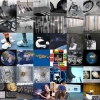In conversation with Richard Clar

COLLISION II: A Site - Specific Orbital Debris Constellation Sculpture

Chocolate Pudding Cake: a favourite at ISS

Spaceflight Dolphin

Shrimp Cocktail – since the Apollo days

Subcategories
ASTROCraft
Astronomers Without Borders' AstroCrafts web blog presented by Kathleen Horner will share a unique variety of creative, educational and fun astronomy-related crafts inspired by the cosmos in which we live. The AstroCrafts page projects will be presented periodically throughout the year for the whole family that involves hands on arts and crafts that will teach us about the wonders of our universe. The projects are especially a great resource for schools and other organizations, too. The AstroCrafts projects is another way we can discover our own inner artist and find personal expression of what we see and feel in the cosmic life that is all around us.






